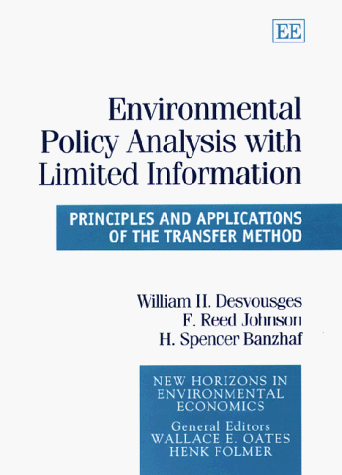New Horizons in Environmental Economics
1 total work
Environmental Policy Analysis With Limited Information
by William H. Desvousges, F R Johnson, and H. S. Banzhaf
The transfer approach to quantitative policy analysis adapts information and data from existing studies and so provides an economical way to assess potential benefits and costs for projects. The book presents a detailed framework for examining the transfer of information, outlines the basic steps of the method, and discusses solutions to frequently encountered problems. It then illustrates the method with an extensive case study of environmental externalities from electricity generation. This case study provides the opportunity to discuss salient aspects of the transfer method in more detail, including conceptual principles, the quality of original studies, empirical difficulties and estimation techniques. It also demonstrates the use of state-of-the-art techniques such as meta analysis to synthesise and transfer information from multiple studies and assesses the reliability of the transfer estimates with repeated computer simulations, a technique known as Monte Carlo analysis.
Environmental Policy Analysis with Limited Information will appeal to environmental policy analysts and managers as well as environmental economists.
